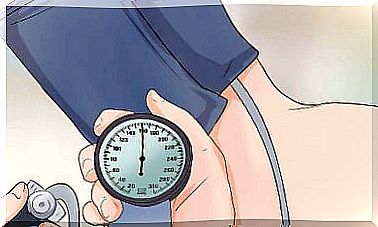Parents Of Children With Type 1 Diabetes

Type 1 diabetes is a chronic disease. When properly controlled, it does not necessarily diminish the quality of life of those affected by it. Children with type 1 diabetes require special care, but they can still live a normal life.
Today we explain a little more about this disease. We also give you some advice on how to be a parent to children with type 1 diabetes.
Children with type 1 diabetes
Type 1 diabetes is an autoimmune disease that develops in childhood. It affects the cells that produce insulin. Overall, it accounts for about 10% of cases of diabetes, and it has a high incidence between 10 and 15 years.
In those with type 1 diabetes, the pancreas loses its ability to produce insulin because the immune system attacks and destroys the beta cells that synthesize and secrete insulin.
Insulin, a peptide hormone, regulates the metabolism of carbohydrates, fats and protein by promoting the absorption of carbohydrates. It includes glucose from the blood into the liver, fat and skeletal muscle cells, which are needed to produce energy. Therefore, it is important to counteract this deficit.

The underlying cause of type 1 diabetes is uncertain. However, some believe that factors such as genetics and certain viruses contribute to the occurrence of its symptoms. Although the onset of type 1 diabetes usually occurs in childhood or prepubertal, it can also begin in adulthood.
Also read: 7 early symptoms of diabetes
Advice for parents of children with type 1 diabetes

In the following, we present a number of general recommendations so that both your family and the affected child can manage type 1 diabetes and so that the disease does not compromise their quality of life.
1. Increase your knowledge about type 1 diabetes
If your child is diagnosed with this disease, it is very important that they know the basic aspects of the disease. It is also important that you help them carry out a normalization process in their immediate environment. This helps them adapt to their new lifestyle.
Family members and teachers must know the procedure for action and participate in the pharmacological and emotional care of the child.
2. Understand the dietary guidelines

Food is key in treating children with type 1 diabetes. Therefore, it is very important that they remain in control both at home and at school and follow some specific regimes.
The most important things to consider are:
- A balanced diet: The child needs to know how to control the amount of fat it ingests as it reduces the effect of insulin and leads to obesity. For example, fruits and vegetables as well as high quality proteins and complex carbohydrates should all be a part of all their meals.
- They should limit their intake of simple carbohydrates. It is important to limit your intake of these to avoid sudden increases in blood sugar. Foods to be avoided due to their high content of added sugar include highly processed cakes, juices, syrups, cookies and all kinds of pre-packaged junk food.
- Parents should ask teachers about the school cafeteria’s weekly menus. In addition, if the child is very young, educators should know that these children need another breakfast or lunch so that their blood sugar level remains stable.
Use pharmacological treatment
Children with type 1 diabetes should inject insulin several times a day: fast-acting insulin before each meal and slow-acting once or twice a day.
Try to administer the drug in a relaxed environment and preferably at home. Teachers should know the procedure if the child is too young and needs help administering the injections.
Also read: How to treat diabetes with bay leaves
4. Blood glucose control

Children with diabetes should be periodically checked through a small socket on the index finger to find out what their blood sugar level is.
At school, they should be able to do it in the classroom or anywhere else where they feel comfortable.
5. Motion
Children with type 1 diabetes can perform the same physical activities as other children their age. As long as they follow these guidelines:
- They should measure their blood sugar before and after exercise to adjust their meals if necessary.
- Parents or teachers present during the child’s physical activity should have quick access to carbohydrate – rich foods. This is in case of a sudden drop in blood sugar (hypoglycemia).
Children with type 1 diabetes: Summary
The current tools used to control type 1 diabetes allow those affected by the disease to have a good quality of life.
When it comes to children, all adults around them should know about the characteristics of the disease. This is so that they are able to guide and help them maintain proper blood sugar control.









